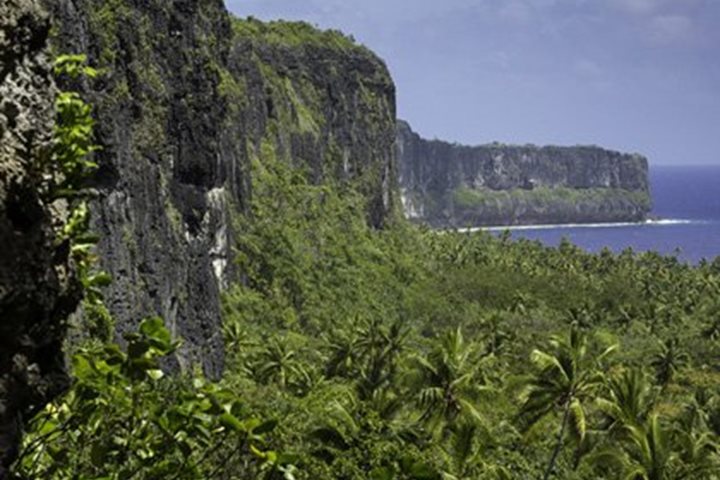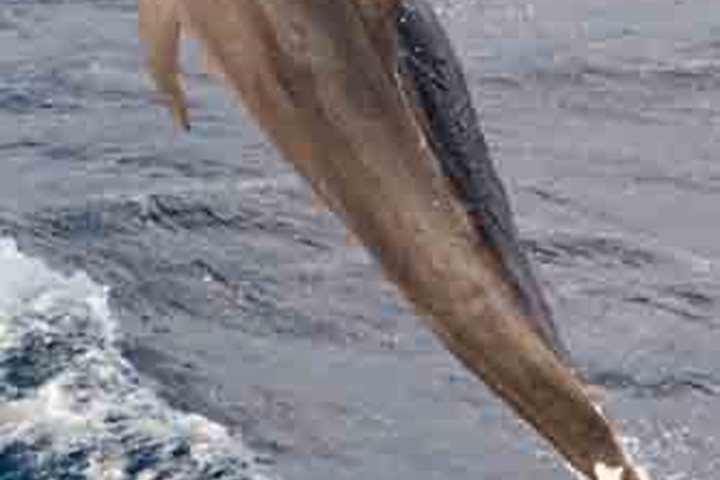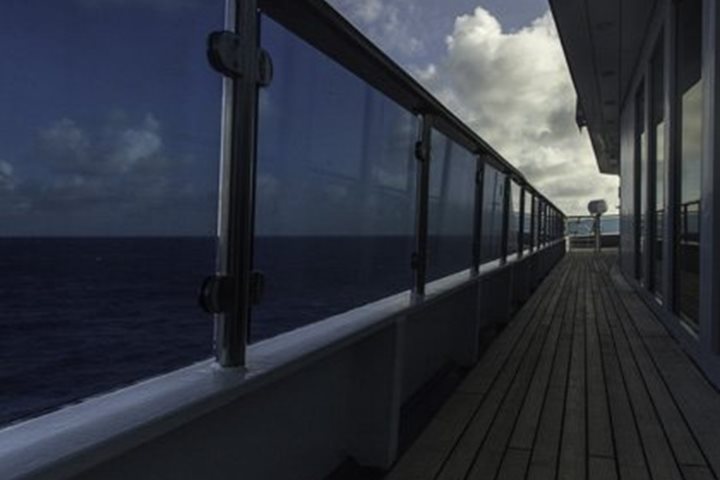A stormy dawn, punctuated by flashes of lightning and sheeting rain on the horizon, gave way to calm seas and bright sun beaming down on National Geographic Orion. As we enjoyed our breakfasts, the ship edged into the sheltered side of Millennium Atoll. This oddly modern-sounding island far out in the Pacific was renamed by the Kirabati government from Caroline Island, after some jiggling of the International Date Line made it the first land to see the dawn of the new millennium and, therefore, the site of a raucous New Year’s Eve party. However, the island remains uninhabited, which meant our local welcome was provided by a pod of bottlenose dolphins lazily playing beside the ship and curious black noddies peering into the aft deck.
Our early arrival allowed for a delightfully full day of exploration starting with a morning of snorkeling, diving, and boating aboard the glass-bottomed Zodiac. What we quickly discovered was that, despite the 21st century name, the reefs remain a window into an almost forgotten past of pristine seas. Every square centimeter of reef is packed with corals and above this textured backdrop dance schools of fish. Pink and yellow anthias pulse as a wall of mouths while the ethereal black durgons ripple their fins through the water. Black-tip reef sharks patrol the shallows while grey reef sharks and turtles appear from time to time from the deep blue of the drop off. Bohar snapper, quickly fished out of most reefs, patrol the deep fissures of the coral but emerge to inspect free-divers with their searching yellow eyes. And just when most of us were thinking it couldn’t get any better, a manta ray languidly glided past the platform and our group of snorkelers.
After lunch, our Zodiacs nosed their way through a narrow channel in the outer reef allowing us to explore the island afoot. Guests wandered the shores, sought out the monument created in honor of the new millennium, or swam in the bathwater-warm lagoon. A land of crabs and sea birds, fairy terns and frigates wheeled overhead while large red hermit crabs scurried underfoot. Waiting to emerge at nightfall, in the thickets of the Tournefortia shrubs scuttled massive coconut crabs. These mighty crustaceans are a sure sign of the untouched nature of the atoll, as their tasty lobster-like meat means they typically disappear in proximity to human populations. As if calling an end to the day’s incredible performance, a curtain of rain closed as our last, most intrepid guests returned to the ship, drawing a satisfying conclusion to a magnificent day on Millennium Atoll.







